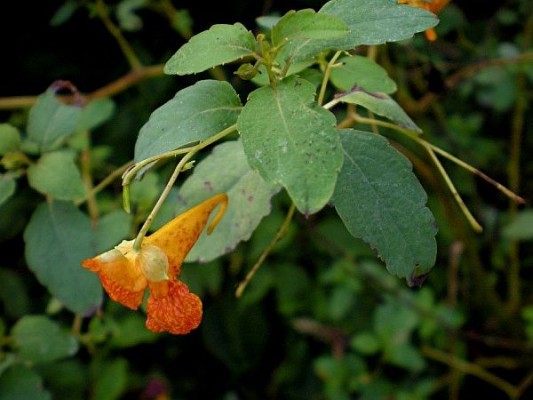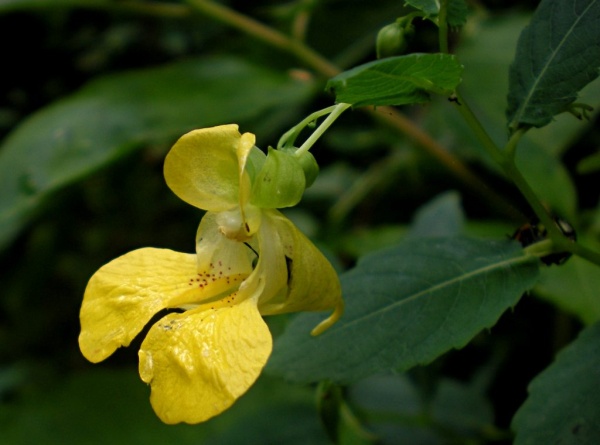
When I wrote about hummingbirds and orange jewelweed last week, some of you wondered if the birds sipped at pale (yellow) jewelweed, too. While finding the answer I learned a cool fact: Bees can’t see red.
Hummingbirds are attracted to shades of red so they see the spots on orange jewelweed (Impatiens capensis) as a delicious target and rely on this plant during fall migration.
Over time the spur on Impatiens capensis has evolved to maximize pollination by hummingbirds with a tight cone-shaped entrance that guides the birds’ bills.

Hummingbirds don’t care about yellow so they don’t choose the other jewelweed — the “pale” one — but bees do.
Bees see yellow, purple, blue, and a color called bee’s purple, a mixture of yellow and ultraviolet which we humans can’t see. Bees can’t see red so they aren’t much attracted to orange jewelweed.
However, pale jewelweed (Impatiens pallida) is designed for bees. Not only is it yellow but its expandable entrance accommodates both large and small bees, brushing their bodies as they walk in.

Though the two jewelweeds grow near each other, they send different signals. Red is for birds. Yellow is for bees.
(Honey bee photo from Wikimedia Commons. Orange and pale jewelweed photos by Flora Pittsburghensis. Click on the images to see the originals)
p.s. On the subject of bees (in general) here’s a recent article from The Allegheny Front about breeding stronger honey bees: Building a Better Honeybee